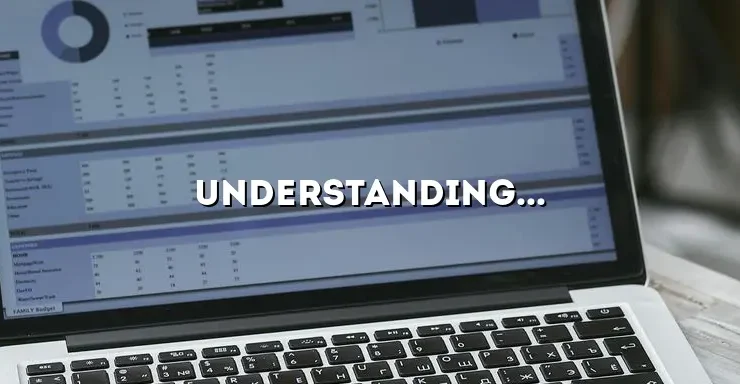
When it comes to running a dental practice, protecting yourself and your patients is of utmost importance. One crucial aspect of this is having dental malpractice insurance. However, understanding the cost of dental malpractice insurance and choosing the right coverage can be a daunting task. In this article, we will delve into the factors that influence the cost of dental malpractice insurance and provide insights on how to select the appropriate coverage for your practice.
Before we dive into the details, let’s define what dental malpractice insurance is. Dental malpractice insurance, also known as professional liability insurance, is a type of insurance that protects dental professionals from financial losses resulting from negligence, errors, or omissions in their practice. It covers legal expenses, settlements, and judgments that may arise from malpractice claims.
Understanding the Factors Affecting Dental Malpractice Insurance Cost
In this section, we will explore the key factors that influence the cost of dental malpractice insurance. Understanding these factors will help you assess the potential costs involved in securing the right coverage for your dental practice.
1. Location
The location of your dental practice plays a significant role in determining the cost of malpractice insurance. Insurance companies consider factors such as the state’s legal environment, the frequency of malpractice claims in the area, and the average settlement amounts. States with higher claim rates and larger settlements generally have higher insurance premiums. Additionally, rural areas may have lower premiums compared to urban areas due to lower claim frequency.
2. Years of Experience
Insurance companies also consider the number of years you have been practicing dentistry when determining your premium. Dentists with more experience tend to have lower malpractice insurance costs since they have a proven track record and are considered less risky. Conversely, newer dentists or those who have recently made a career change may face higher premiums due to their limited experience.
3. Claims History
Your claims history is a significant factor that insurers consider when calculating your malpractice insurance premium. If you have a history of malpractice claims or settlements, insurers may view you as a higher risk and increase your premium accordingly. On the other hand, a clean claims history can help lower your insurance costs.
4. Coverage Limits
The coverage limits you choose for your dental malpractice insurance policy directly impact the cost of your premium. Higher coverage limits provide greater protection but also result in higher premiums. It is essential to carefully evaluate your practice’s needs and strike a balance between adequate coverage and affordability.
5. Type of Procedures
The type of procedures you perform in your dental practice can affect your malpractice insurance premium. Certain procedures, such as oral surgery or implant placements, are considered higher risk, leading to higher insurance costs. On the other hand, routine preventive treatments may have lower associated risks and, therefore, lower premiums.
Comparing Different Types of Dental Malpractice Insurance Policies
In this section, we will discuss the different types of dental malpractice insurance policies available and help you determine which one suits your practice’s needs best.
1. Occurrence-Based Policies
An occurrence-based policy provides coverage for any incidents that occur during the policy period, regardless of when the claim is filed. This type of policy offers long-term protection, even if you switch insurers or retire. However, it tends to have higher initial premiums compared to claims-made policies.
2. Claims-Made Policies
A claims-made policy provides coverage for claims reported during the policy period. It offers lower initial premiums compared to occurrence-based policies but requires continuous coverage to remain protected. If you change insurers or retire without purchasing an extended reporting period endorsement (tail coverage), you may not be covered for claims made after the policy’s expiration.
Assessing Coverage Limits and Deductibles
Choosing the appropriate coverage limits and deductibles is vital when it comes to dental malpractice insurance. In this section, we will guide you through the process of evaluating your practice’s specific needs and risks.
1. Evaluating Your Practice’s Risk Exposure
Assessing your practice’s risk exposure involves considering various factors such as the number of patients you treat, the complexity of procedures performed, and the experience level of your staff. Understanding your risk exposure helps determine the appropriate coverage limits to protect your practice adequately.
2. Balancing Coverage Limits and Premium Costs
While it is essential to have sufficient coverage, it is equally important to balance that with the associated premium costs. Higher coverage limits provide greater protection but come with higher premiums. Evaluate your practice’s budget and weigh the potential risks to strike the right balance.
3. Deductibles and Their Impact
Deductibles are the amount you must pay out of pocket before your insurance coverage kicks in. Higher deductibles generally result in lower premiums. Consider your financial capabilities and the potential frequency of claims when choosing a deductible amount.
Evaluating Additional Coverage Options
Beyond the basic malpractice insurance coverage, there are additional options that you may want to consider to enhance your protection.
1. Cyber Liability Coverage
In today’s digital age, protecting sensitive patient information is crucial. Cyber liability coverage helps safeguard your practice against data breaches, cyberattacks, and the associated legal and financial consequences.
2. Employment Practices Liability
This coverage protects your practice against claims related to employment-related issues, such as wrongful termination, discrimination, or harassment. It provides coverage for legal fees, settlements, and judgments.
3. Entity Coverage
Entity coverage extends protection beyond individual dentists to the dental practice as a whole. It covers claims arising from the actions of employees or contractors and offers comprehensive coverage for the entire practice.
Obtaining and Comparing Quotes from Multiple Insurers
When it comes to purchasing dental malpractice insurance, it’s crucial to shop around and obtain quotes from multiple insurers.
1. Research and Identify Reputable Insurers
Start by researching and identifying reputable insurers that specialize in dental malpractice insurance. Look for companies with a strong financial standing and a history of excellent customer service.
2. Provide Accurate Information
When requesting quotes, ensure that you provide accurate and detailed information about your practice. Include factors such as your location, years of experience, claims history, and the type of procedures you perform. This allows insurers to provide accurate quotes tailored to your specific circumstances.
3. Compare Coverage and Premiums
When comparing quotes, don’t solely focus on the premium amount. Pay attention to the coverage details, including the policy limits, deductibles, and any additional coverage options. Consider the overall value and the level of protection offered by each policy.
Considering Risk Management Strategies
Implementing effective risk management strategies can not only reduce the likelihood of malpractice claims but also lower your insurance costs.
1. Proper Documentation and Record-Keeping
Maintain thorough and accurate documentation of patient interactions, treatment plans, and consent forms. Proper record-keeping can help demonstrate the standard of care provided and serve as evidence in case of a claim.
2. Effective Communication with Patients
Establish clear lines of communication with your patients. Inform them about the treatment process, potential risks, and alternative options. Encourage patients to ask questions and address any concerns promptly and transparently.
3. Ongoing Staff Training and Education
Continuously invest in training and education for yourself and your staff. Stay updated with the latest advancements in dental practices, infection control protocols, and patient safety measures. Well-trained and knowledgeable staff can help prevent errors and improve patient outcomes.
Seeking Professional Guidance and Expert Advice
Navigating the world of dental malpractice insurance can be complex, and seeking professional guidance can be invaluable.
1. Insurance Brokers
Consulting with insurance brokers who specialize in dental malpractice insurance can save you time and effort. They have in-depth knowledge of the insurance market and can help you navigate the various policy options, compare quotes, and negotiate favorable terms.
2. Legal Professionals
Seeking advice from legal professionals experienced in dental malpractice can provide valuable insights into potential risks and legal considerations. They can review policy terms, help you understand the fine print, and ensure you make informed decisions to protect your practice.
In conclusion, dental malpractice insurance is a critical investment for any dental professional. By understanding the factors that influence the cost of insurance, comparing different policies, evaluating coverage limits, considering additional coverage options, obtaining multiple quotes, implementing risk management strategies, and seeking professional guidance, you can navigate the realm of dental malpractice insurance with confidence. Protecting yourself, your practice, and your patients should be a top priority, and finding the right insurance coverage is an essential step towards achieving that goal.






